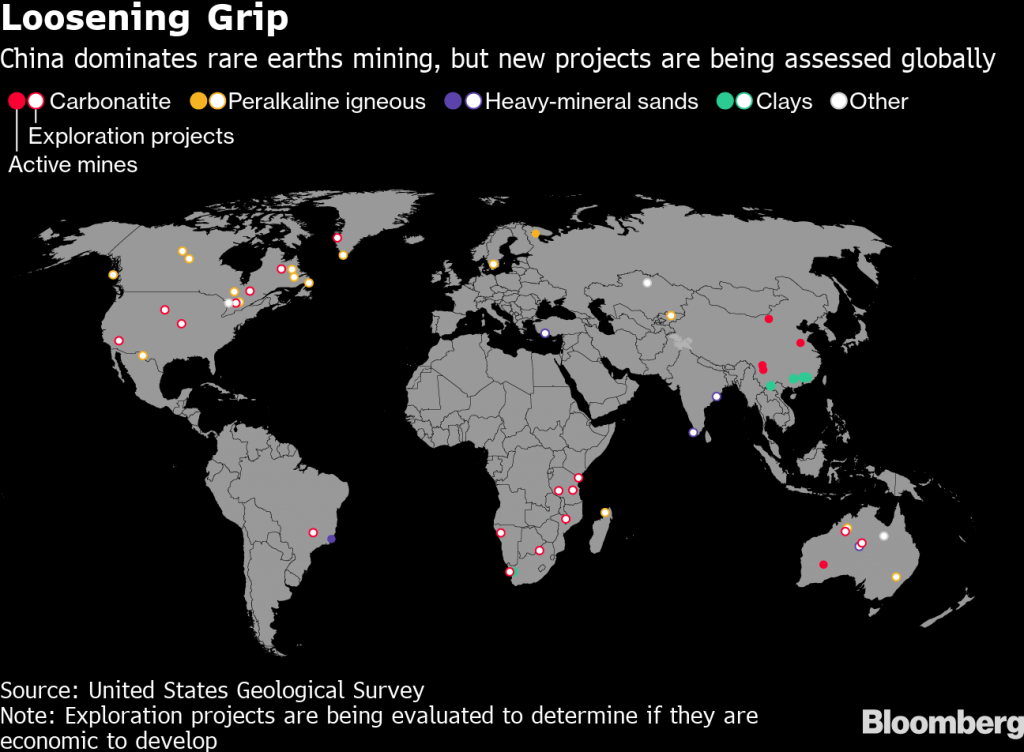Canada is studying how its mining sector can become a key
provider of rare earths and other critical minerals and metals a greener world
will need.
Natural Resources Canada would hire a British firm to provide 10-year market forecasts for nearly two dozen vital minerals used in products like electric car batteries, solar panels, wind turbines and military devices, The Canadian Press reported.
Of the 35 minerals and metals the US deemed critical earlier this year, Canada was identified as a major import source for 13
The plan comes as the Trudeau government is working with the United States on a joint initiative to ensure reliable supplies of rare earths and critical minerals, a market currently dominated by China.
Of the 35 minerals and metals the US deemed critical earlier this year, Canada was identified as a major import source for 13.
The 17 vital elements used in missile systems, electric
vehicles, computer screens and other tech devices were thrown into the
spotlight after China signalled earlier this year that it may
restrict supply to the US as a retaliatory measure for tariffs imposed by
Washington.
The threat set off alarm bells not only because the Asian giant is the US main provider of rare earths, but also because it accounts for 70% of global production and controls 90% of a market valued at $4 billion.
In the past months, the Trump administration has stepped up efforts to ensure the supply of critical minerals from outside China. As part of those initiatives, it has signed a memorandum of understanding with Greenland to conduct a hyper-spectral survey to map the country’s geology.

Washington has also gained the support of Australia,
which has committed to facilitate potential joint ventures to
improve rare earth processing capacity and reduce reliance on Chinese rare
earths. The mineral agencies of the both countries signed in November a research agreement to quantify
their reserves of critical mineral reserves.
Despite their name, the minerals grouped under the rare
earths label are not rare. According to the US Geological Survey (USGS), they
are roughly as common as copper. But, because rare earth ores oxidize quickly,
extracting them is both difficult and extremely polluting.






